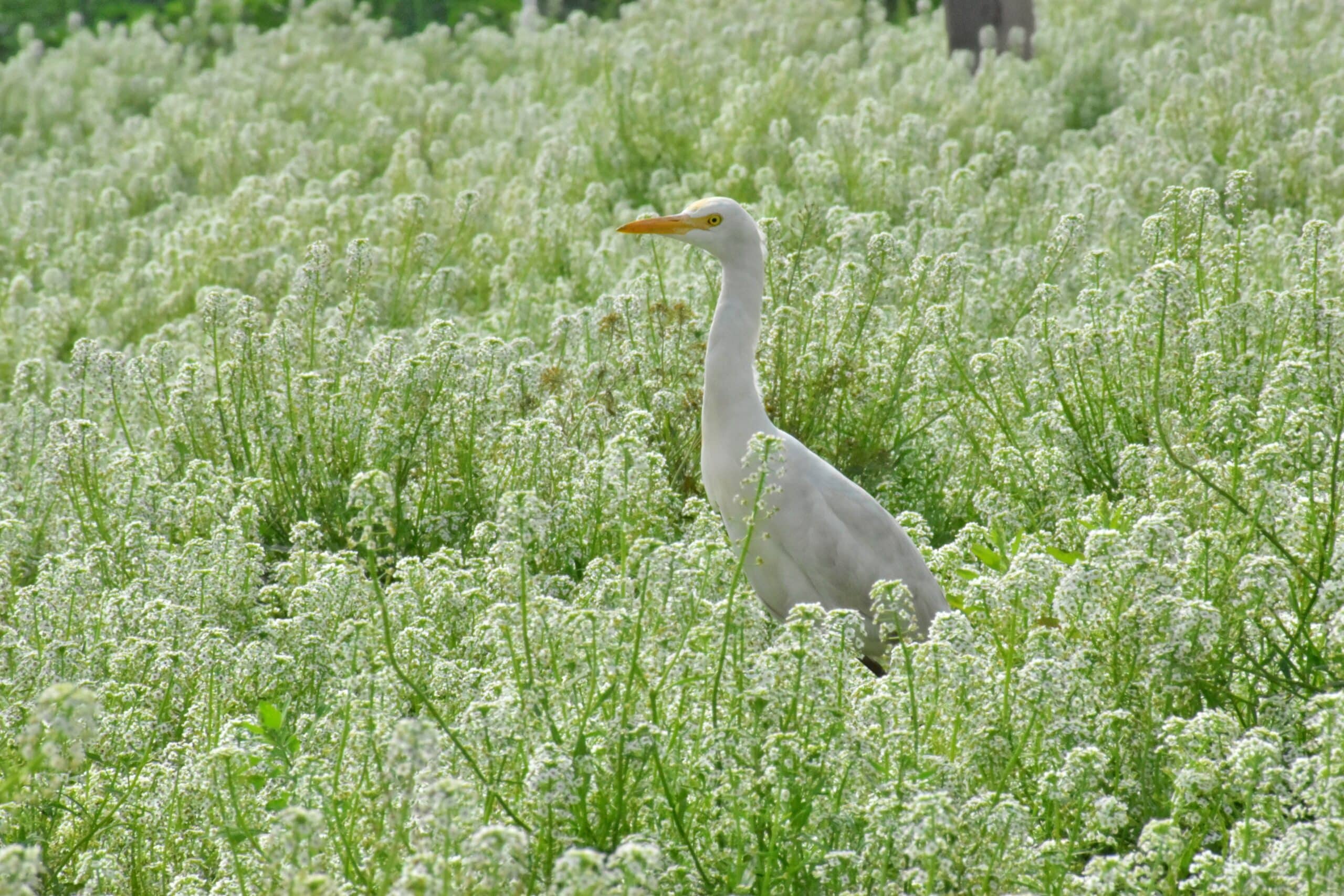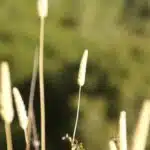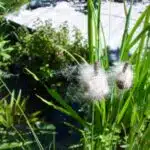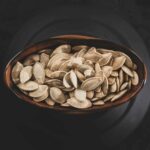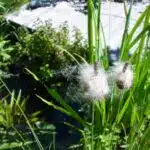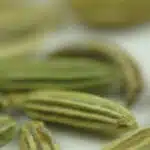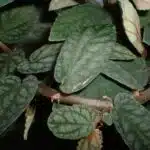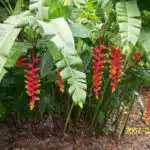The journey of growing plants from seeds is a fulfilling and rewarding one. It’s like watching a miracle unfold before your eyes – tiny little seedlings sprouting up, taking in the warmth of the sun and the nourishment of the soil. But before you can experience this miracle, you need to know how to start your seeds indoors.
If you’re new to gardening or just starting out with planting seeds, don’t worry! You’ve come to the right place for all the information and advice you need to get started. This guide will equip you with everything you need to know about how to successfully start your seeds indoors – from selecting the best type of soil, to choosing containers, all the way through caring for your seedlings until they’re ready for transplanting into their outdoor home.
Whether you’re an experienced gardener or just beginning your horticultural journey, this complete guide will provide tips and tricks for starting seeds indoors so that your plants have a strong start as they enter their new environment. With some careful preparation and attention to detail, you’ll be able to create a thriving backyard oasis in no time!
Determine Which Seeds To Plant Indoors
Are you tired of the same old boring gardening? If so, then why not try something new – starting seeds indoors! It’s the perfect way to get your plants off to a strong start and gives you more control over growing conditions. But where do you begin? Fear not, I’m here to guide you through the process.
Let’s start with what kind of seeds you should plant indoors. Don’t just grab any old variety from your local garden center; some require more special care than others. Look for seeds that are specifically labeled as “indoor-friendly” or “suitable for indoor sowing”. Consider how much light and moisture the seed needs, along with its ideal temperature range and germination rate. With this information in hand, you’ll find it easier to decide which varieties will thrive in your particular environment.
Of course, there’s more to starting seeds indoors than just choosing a variety! You’ll also need to pick out suitable containers and fill them with an appropriate soil mix. Once your containers are prepared and filled with soil, it’s time to actually sow the seeds and provide the necessary conditions for their growth. This includes ensuring adequate light levels, keeping temperatures stable, monitoring moisture levels, and providing good air circulation around the plants. Finally, don’t forget about fertilizing – it can help give your seedlings a leg-up in their development!
So there you have it: planting seeds indoors doesn’t have to be intimidating when you know what steps to take! With this knowledge in hand, let’s move on to selecting the right containers for starting those little bundles of potential into vibrant life…
Choose The Right Containers For Starting Seeds
Starting seeds indoors can be a rewarding experience, and the best way to ensure success is to start with the right containers. Choosing the appropriate vessels for your seedlings will not only help them thrive but also make growing much easier. To illustrate this point, consider the image of a tree starting from a tiny seed – it starts small and grows rapidly, needing bigger and bigger containers as it matures.
When selecting containers for starting seeds indoors, there are several factors to consider. First, opt for materials that are free from contaminants, such as plastics or chemical-treated wood. Secondly, make sure that your containers have adequate drainage holes so that water can easily escape and air can move freely around the plants’ roots. Additionally, you should choose container sizes based on how large the adult plant will get – while smaller plants may do well in shallow trays or cups, larger plants will need deeper pots with more soil depth to accommodate their extensive root systems.
Finally, consider using self-watering systems if possible – these come in many forms, ranging from specialized plugs that allow excess water to drain out while regulating moisture levels inside each pot to fully automated hydroponic setups equipped with sensors and timers. Not only do these help manage watering cycles more efficiently but they also reduce the risk of overwatering and other common problems associated with manual irrigation methods. With proper container selection and a bit of planning ahead of time, you’ll be ready to create an optimal growing environment for your indoor seedlings!
Create The Optimal Growing Environment
Creating the optimal growing environment is key to successful seed starting indoors. The temperature, light, and moisture levels should all be taken into consideration when setting up your indoor garden. Start by selecting a location with plenty of natural light, such as near a south-facing window or under grow lights. You’ll also want to ensure that the area is well ventilated and at an ideal temperature for the type of plant you are trying to germinate. Keeping the soil moist but not soggy is also essential for successful seed germination. A humidity dome or tray can help keep the soil from drying out too quickly, allowing for better control over moisture levels in your container garden. Lastly, make sure that you have proper drainage in place so that your plants don’t become waterlogged.
Once you have established the right environment for your seeds to thrive, it’s time to prepare and plant them properly. Depending on the type of seeds you’re using, you may need to soak or stratify them prior to planting in order to increase their chances of sprouting successfully. When planting your seeds, use sterile potting mix specifically designed for seed starting and follow the directions on each packet regarding how deep they should be planted and how often they should be watered before germination takes place.
TIP: Be sure to check soil moisture levels regularly using a moisture meter or simply by sticking your finger into the soil approximately one inch deep! This can help prevent over-watering which can cause mold growth and other issues that could kill off any potential sprouts before they even have a chance!
Prepare And Plant The Seeds
Once you have created the optimal growing environment, it’s time to prepare and plant the seeds. This is a critical step of the process, so make sure to take your time and do it right. After all, as they say, ‘you reap what you sow’!
The initial preparation of seeds requires a few steps. First, inspect each seed for firmness and quality. Discard any that are not up to par before planting them. It’s also important to check for any recommended stratification or scarification instructions before sowing. Stratification is when seeds are stored in cold temperatures for a period of time prior to planting and scarification involves breaking down the protective layer on some hard-shelled seeds with sandpaper or by soaking them in warm water overnight.
Once this is done, place two or three seeds into small individual pots filled with potting soil – be sure not to overcrowd each container – and then lightly cover the seeds with soil. Add a label to each pot so you can easily keep track of what type of seed is planted in each one. Lastly, use a spray bottle or mister to lightly mist the soil surface until it’s moist but not overly wet – too much moisture can cause mold growth or inhibit germination altogether!
It’s now time to move on to the next step: watering and fertilizing your newly planted seeds.
Water And Fertilize The Seeds
It is time to address the often overlooked, yet all-important step of watering and fertilizing your seeds. For those who are just starting out in botany and gardening, this may seem like a daunting task, but fear not! With the right tools and understanding, you can achieve green-thumb greatness.
To begin with, it is essential to properly water your seeds. First off, make sure that the soil is damp – not saturated – prior to sowing the seeds. Once they have been planted, use a spray bottle or watering can and lightly mist the dirt surface until it glistens with moisture. From here on out, it is important to keep an eye on the soil’s moisture level; if it begins to dry out too much then give them more water until it reaches its optimal state.
Next up is fertilizing your seeds. To do this correctly you will need to select a fertilizer specifically tailored for seedlings; these usually come in either liquid or powder form. Take caution when administering these substances as too much fertilizer can cause severe damage to your plants. Start by following your product’s instructions for dosage and frequency, then take extra precautions such as monitoring for signs of overfeeding (i.e., brown discoloration). With all of these measures taken into account your little seedlings should be well nourished and ready to grow!
Now that you have mastered the basics of both watering and fertilizing your seedlings, you are one step closer to achieving success in the garden!
Thin The Seedlings
Nurturing seeds until they are ready to be planted outdoors is an exciting process. Like a gardener nurturing a child, one must provide the seeds with all their needs in order to have success. The sixth step in the process of starting seeds indoors is thinning the seedlings.
A thick mass of seedlings crowding each other for sunlight and resources can easily lead to stunted growth and disease. To avoid this, it’s important to thin out your seedlings once they reach about two inches tall. This will prevent overcrowding and give each seedling enough room to grow up healthy and strong.
The best way to thin your seedlings is by snipping them off at soil level with scissors or tweezers. It may seem like a difficult task, but removing those extra plants will help ensure that the remaining ones thrive under your care. Thinning also allows you to identify any weak or diseased plants that should be removed before they spread any further. With proper thinning techniques, you’ll soon have strong, healthy seedlings that are ready for their next stage of growth!
Provide Adequate Light
Adequate light is essential for successful seed germination and growth indoors. Providing your seedlings with the right amount of light is key. Too little light and the plants will become leggy and weak, while too much can lead to burning or other problems.
When it comes to providing adequate lighting, there are several options available. Natural sunlight is best, but if that’s not an option, then you can use artificial lights such as fluorescent or LED bulbs. When choosing a bulb, make sure it produces full-spectrum light in order to provide the full range of colors that plants need for photosynthesis. The bulb should be placed close enough to the plants so they get direct exposure without being too close and causing burning.
If natural sunlight isn’t available, you may need to supplement your lighting setup with grow lights or specialized bulbs. Keep in mind that just because a plant has adequate light doesn’t mean it can’t still benefit from additional sunlight if possible—so always keep your options open! With the right level of lighting, you can expect healthy seedling growth in no time at all.
Now that we’ve discussed providing adequate light for your seedlings, next we’ll cover how to maintain the proper temperature for optimal growth indoors.
Maintain Proper Temperature
Maintaining proper temperature is a critical step in successfully starting seeds indoors. A consistent temperature of between 65 and 75 degrees Fahrenheit is ideal for most species. If the temperature fluctuates too much, it can cause the seedlings to fail. Here are three key tips to keep in mind when maintaining temperature:
Keep the space well-ventilated. Make sure there is adequate air flow throughout the area where you are growing your seeds. This will help prevent heat build-up and maintain an even temperature.
Place heating mats underneath containers if necessary. Heating mats can be used to provide extra warmth to young seedlings, especially during colder nights or in cooler climates. Just make sure to follow manufacturer’s directions for use, as improper use could damage the seeds or seedlings.
Use a thermometer to monitor the ambient air temperature around the seeds or seedlings if needed. This provides an accurate reading of the exact temperature that your plants are exposed to and allows you to adjust accordingly if necessary.
Keeping proper temperature is essential for successful germination and growth of indoor-grown seeds, but it isn’t enough on its own – you also need to keep them moist with regular watering.
Keep The Seedlings Moist
Maintaining a proper moisture level for the seedlings is essential for successful germination. For anyone just starting out growing plants indoors, it can be daunting to know how much water to give them. Thankfully, it’s not too difficult to remember once you understand the basics.
Let me illustrate with an anecdote: I once worked with a beginner gardener who was so concerned about giving her seedlings too much water that she only watered them every other day. After a few weeks of this schedule, her seedlings were wilted and yellowed from lack of water. She thought they were on their way out until she finally decided to give them a thorough drink—and they came back healthier than ever!
The lesson here is that seedlings need more water than most people think. In order to thrive, they should be kept evenly moist but never soggy. It’s important to develop a watering system that keeps your plants healthy without drowning them or letting them dry out entirely. This could involve using drip trays or self-watering planters, or simply checking the soil daily and making sure it never gets too dry or overly wet.
By maintaining the correct moisture level for your seedlings, you can ensure that they have the best chance of survival as they start their journey into adulthood!
Harden Off The Seedlings
After the arduous task of germinating and growing seedlings, it is time to harden them off. This process is akin to taking a plunge in cold waters – uncomfortable but necessary. Here’s a four-step guide that will help you go through this process with ease:
- Start the hardening-off process two weeks before transplanting the seedlings into the garden.
- Move the seedlings outside for short periods of time (a few hours) during the day, gradually increasing their exposure to outdoor conditions over several days.
- Shelter them from wind, direct sun, and other harsh elements as they acclimate to outdoor temperatures.
- Bring them back indoors at night until they are ready for transplanting into the garden.
Gardening experts suggest that this process should be done slowly and carefully in order to ensure proper adaptation of your plants to outdoor conditions. Most plants need at least 10 days of hardening off before being planted outside permanently. During this period, keep checking on your seedlings daily and provide water as needed to ensure healthy growth post-transplantation. With proper attention and care, you can avoid any shock or stunted growth once transplanted outdoors.
Transplant Seedlings To The Garden
After your seedlings have established themselves indoors, it’s time to start thinking about transplanting them into the garden. As with any gardening task, there are a few things to keep in mind before you begin:
• Water and Soil: Make sure that the soil you’re transplanting into is moist, but not overly saturated. Also, check the pH level of the soil and make sure it’s appropriate for the plants you’re growing.
• Timing: The best time to transplant your seedlings is in late morning or early evening when temperatures are cooler. This will give them time to adjust to their new environment without being exposed to too much sun or wind.
• Plant Spacing: Once you’ve transplanted your seedlings, be sure to leave enough space between each plant so they can grow and spread out naturally.
It’s important to take these steps before beginning the transplant process because doing so will ensure that your seedlings have the best chance of thriving in their new environment. Here are a few tips for making sure your seedlings don’t suffer from common mistakes during this process:
• Watering: When watering your seedlings after transplanting, be careful not to overwater them as this can lead to mold or root rot.
• Sunlight Exposure: When first exposing your seedlings to natural light after being indoors, do so gradually by providing shade and then slowly increasing exposure over several days.
• Weeding: Pull any weeds around your transplanted seedlings as soon as possible in order to prevent competition for resources such as water and nutrients. Doing so will give your plants a better chance of survival in their new home!
These steps will help ensure that once you’ve gone through all of the hard work of starting seeds indoors, they will also thrive outdoors! By following these tips, you can rest assured that your hard work won’t go to waste and that you’ll be rewarded with healthy plants ready for harvesting come harvest season!
Common Mistakes To Avoid
It’s easy to get caught up in the excitement of starting your own seeds indoors. But there are plenty of common mistakes to avoid if you want to ensure success. Knowing what to look out for can be the difference between a bountiful harvest and a failed attempt. That’s why it’s important that all aspiring seed starters take the time to read up on the basics before diving into their first project.
For starters, it’s essential that you don’t start your seeds too early or too late in the season. If you plant them before the soil temperature is warm enough, they won’t germinate properly, resulting in poor growth and development. On the other hand, if you wait too long, your plants may not have enough time to mature before frost arrives.
Another mistake that many novice gardeners make is planting their seedlings too deep or in containers that are too small for them to thrive. It’s also important to pay attention to light levels when growing indoors – without adequate sunlight, even the heartiest seeds won’t be able to reach their full potential.
These are just a few of the pitfalls that can befall those who don’t do their research before starting new plants from seed – but with a bit of knowledge and preparation, you can be well on your way towards achieving success with your indoor gardening endeavors!
Troubleshooting Problems With Seed Starting
Beginning a successful seed-starting journey can be a rewarding experience, but it can also present challenges. This section of the guide focuses on troubleshooting common problems that you may encounter when starting seeds indoors.
When beginning your journey with seed starting, it is important to be aware of potential issues. Common problems include inadequate light, which can lead to leggy or weak seedlings; poor air circulation, resulting in fungal diseases; over- or under-watering; and temperature fluctuations. If any of these issues arise, there are simple solutions that you can take to help remedy them.
For example, moving plants to areas with more light or providing artificial grow lights can provide adequate lighting for young seedlings. Good air circulation around the plants should be ensured with proper ventilation and fan systems, while closely monitoring soil moisture levels will help avoid both over and under watering. Furthermore, by providing the right environment in terms of temperature and humidity for the seeds you are growing, you will maximize your chances for success.
By following these tips and being mindful of potential problems during the seed-starting process, you’ll be better equipped to start your own seeds indoors and enjoy an abundant harvest later on!
Harvesting Seeds From Your Plants
Harvesting seeds from your plants is an exciting step in the process of seed starting. As a botanist and gardener, I’ve seen many gardeners use this approach to save money and ensure that their plants thrive for years to come. It’s amazing how just a few simple steps can help you create a bountiful harvest!
When harvesting seeds from your plants, it’s important to pay attention to the plant’s maturity. You’ll want to wait until the plant is fully ripe before collecting the seeds. This will ensure that they are viable and will give you the best chance of success when replanting them. Additionally, make sure that you select healthy plants with no signs of disease or pest damage when harvesting your seeds. It’s also important to remember that some types of seeds need special care, such as drying or freezing, before they can be stored for future planting.
Once your seeds are harvested, you’ll need to store them properly in order to maintain their viability for future use. Make sure that you store them in an airtight container away from heat and direct sunlight. Additionally, make sure that your containers are clearly labeled so that you know which varieties were collected and when they were harvested. When storing your seeds this way, they should remain viable for up to five years! With these tips in mind, you can easily save your own seeds for future planting and ensure a successful harvest each year.
Now that we’ve discussed harvesting our own seeds let’s talk about saving them for future planting so that we can enjoy our bounty again next season!
Saving Seeds For Future Planting
Once you’ve harvested the seeds from your plants, it’s time to save them for the next planting season. Here are a few tips on how to do this effectively:
Start by ensuring that the seeds are fully mature and ready for collection. This will depend on the type of plant you’re growing, as some require more time than others before they’re ripe enough for harvesting. As an example, tomato and pepper plants typically take a few weeks to reach full maturity before their seeds can be collected.
After collecting the seeds, you should properly dry them so they don’t become moldy or rot during storage. Spread out your harvested seeds on a sheet of wax paper and place them in a warm spot with plenty of airflow for several days until they’re completely dry.
Place your dried seeds in airtight containers or zip-top bags and store them away from moisture and extreme temperatures. To maximize their viability, store them in your refrigerator or freezer if possible. For long-term storage, consider using silica gel packs to keep humidity levels low.
Label each container with the name of the plant variety along with the date that you collected the seed – this way, you can easily identify which seed is which when it comes time to start planting again! As a botanist or gardener, saving seeds is an important step towards successful future harvests; it’s worth taking the necessary precautions to ensure that your stored seeds remain viable over time.
Frequently Asked Questions
How Often Should I Water The Seedlings?
When it comes to growing seeds indoors, the most common mistake is over-watering. Too much water can drown the emerging seedlings and prevent them from developing properly. Therefore, it is important to get the watering right in order to ensure successful seedling growth. The question then arises: how often should I water the seedlings?
The amount of water that a seedling needs will depend on its particular species, as well as the soil type, air temperature and humidity of your indoor environment. Generally speaking, however, you should check your seedlings every day and water if necessary. As a rule of thumb, stick your finger into the soil up to about one inch deep – if it feels dry then you should water your plant. It’s best to apply just enough water so that it soaks into the soil but does not pool or cause any runoff. Over time you’ll get a feel for how much water each type of seedling needs and can adjust accordingly.
In addition to regular watering, consider investing in a humidity dome or other container that helps to retain moisture around your seedlings until they are ready for transplanting outdoors. This will help keep them hydrated and maintain optimal levels of hydration for optimal growth. When used properly with due care and attention given to maintaining proper hydration levels, these tools can help ensure healthy and robust plants during their crucial early stages of development.
What Type Of Fertilizer Should I Use For Seedlings?
Fertilizing your seedlings can be a powerful symbol of nourishment and growth. When you give your seeds the right type of fertilizer, it’s like giving them a boost of energy, allowing them to thrive and reach their full potential. As an aspiring botanist or gardener, knowing which fertilizer is suitable for your seedlings is key to their success.
There are several types of fertilizers available depending on the type of plant you’re growing. For example, if you’re growing vegetables or herbs, a general-purpose fertilizer with equal amounts of nitrogen, phosphorus, and potassium will help promote healthy growth. For flowers and shrubs, use a slow-release fertilizer that supplies balanced nutrients over time to ensure consistent results.
It’s important to note that too much fertilizer can burn the roots of young seedlings so use only what is recommended on the label. Additionally, as plants grow larger they require more nutrients; therefore regular application may be necessary in order to keep them healthy and producing strong results. If you’re unsure how often to apply fertilizer for your specific plants then consult an expert in botany or gardening who can provide advice based on your individual circumstances.
How Much Light Is Needed For The Seedlings?
Planting seeds indoors can be a fulfilling and rewarding experience. However, it’s important to understand the amount of light needed for optimal seedling growth. Without adequate illumination, your efforts may be in vain. Let’s explore the intricacies of lighting requirements for successful germination.
When it comes to providing light for your seedlings, there are several factors to consider. Here’s a list of must-haves:
- Intensity of the light is paramount – choose an artificial grow light or place them in a bright spot near a window where they will receive at least 8 hours of direct sunlight each day;
- Distance is critical – be sure to keep your seedlings at least 3 inches away from any lamp or window;
- Duration is key – depending on the type of plant, you’ll want to adjust the hours of illumination accordingly (usually between 16-18 hours per day);
- Quality counts – purchase a bulb with full spectrum lighting capabilities, including both red and blue wavelengths which are essential for photosynthesis.
When done properly, proper lighting will help achieve maximum germination rates and ensure healthy growth for your plants. While natural sunlight is preferred, adopting an appropriate artificial supplement can prove just as effective if done correctly. It’s essential to research specific needs for each species before beginning your indoor-planting journey – doing so could make all the difference in bringing life to your greens!
How Long Does It Take For The Seedlings To Be Ready For Transplanting?
The process of growing seedlings indoors can be a rewarding one, but it requires patience and attention to detail. When it comes to transplanting seedlings, timing is key in order for them to have the best chance of survival. So how long does it take for the seedlings to be ready for transplanting?
When it comes to this process, there are a few factors that will influence the timeline. It depends on the type of seedling you are growing, as some species take longer than others to mature and develop the necessary root system. The amount of light exposure is also important; many types of seedlings require several hours of light each day in order to grow properly.
Finally, temperature can play an important role in determining when your seedlings are ready for transplanting. Generally speaking, most plants do best if they’re kept between 65°F and 75°F during germination and growth stages. Keeping track of these environmental factors — in addition to regular watering — will help ensure your plants are strong enough for transplanting when the time comes.
What Are The Best Methods For Hardening Off The Seedlings?
Hardening off the seedlings before transplanting is an important step when growing seeds indoors. To ensure your seedlings are well prepared for their new environment, there are a few methods you can use to harden them off. In this article, I will discuss the best techniques for hardening off your seedlings, so they can be successfully transplanted into their new home.
First and foremost, begin by exposing your seedlings to direct sunlight in small increments each day. This process should take place over a period of 7 – 10 days and should increase gradually each day until the seedlings are used to full sun exposure. Additionally, make sure that you don’t leave them out too long as it could cause damage or harm them.
Other methods to consider include: • Creating a wind tunnel by using two benches with fans facing each other on either side of your seedlings to get them used to windy conditions • Introducing cooler temperatures by setting up a cold frame and placing the seedling trays inside for a few hours at a time • Increasing water levels slowly from light misting to more frequent waterings
By following these steps during the hardening off period, you can help your seedlings become accustomed to outdoor weather conditions which will ultimately lead to better chances of successful transplantation. Taking the extra time needed for this stage will be worth it in the end as healthy plants require fewer resources and maintenance than unhealthy plants do.
Conclusion
In conclusion, growing seeds indoors can be a rewarding experience with the right information and techniques. When done properly, you can have healthy seedlings ready to transplant in no time. It is important to remember to water your seedlings regularly and use the correct fertilizer for their needs. Additionally, proper lighting and hardening off are essential for your seedlings’ success.
With the right combination of knowledge, timing, and materials, you can create an ideal environment for your seedlings that will help them thrive outdoors when transplanted. The journey from starting seeds indoors to watching them blossom in a garden is truly an amazing experience that any gardener should take part in at least once.
By following these guidelines and tips outlined in this guide, you will be on your way to becoming a botany specialist or gardening guru! With patience and dedication, you will be able to watch the fruits of your labor bloom before your eyes – literally!

